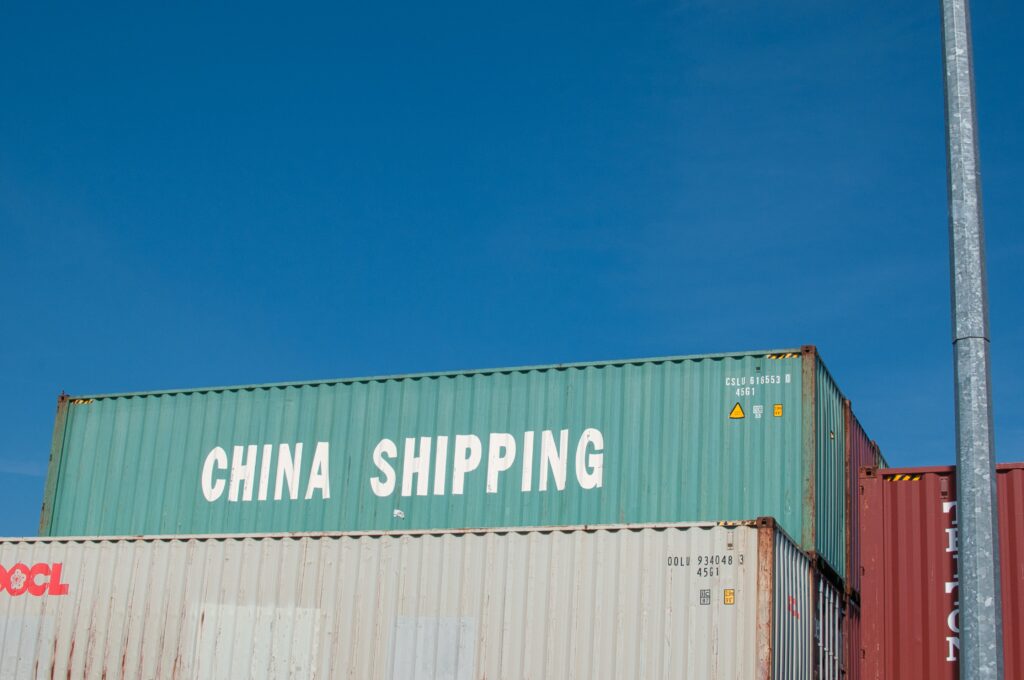Trade Amidst Political Change: Navigating the 2024 Election's Influence on Global Markets
Source Photo: www.unsplash.com
2024 Election’s Influence on Global Markets
As the world prepares for the 2024 US Presidential Election, the potential impact on global markets is a topic of much discussion and speculation. The outcome of the election will undoubtedly have a significant influence on trade policies and international relations, and businesses must be prepared to navigate the changes that may arise. In this article, we will explore the impact of political change on trade, historical examples of political change affecting global markets, the role of the 2024 Election in shaping trade policies, tension with China and its implications for global trade, strategies for businesses to navigate the trade war, the importance of staying informed and adaptable in a changing political landscape, and expert insights and predictions on the future of global trade.

Introduction to the 2024 Election's Influence on Global Markets
The 2024 US Presidential Election is expected to have a significant impact on global markets. The outcome of the election will determine the direction of US trade policies and international relations, and the decisions made by the new administration will have far-reaching consequences for businesses around the world. With the US being one of the largest economies in the world, any changes in its trade policies will have a ripple effect across the global economy.
The 2024 Election is taking place at a time when global trade is already facing a number of challenges. The ongoing trade war between the US and China, the renegotiation of NAFTA, and the imposition of Mexico tariffs are just a few examples of the current political climate. These events have created uncertainty and instability in global markets, and the outcome of the 2024 Election is likely to add to this uncertainty.
The Impact of Political Change on Trade
Political change has always had a significant impact on trade. Changes in government policies, regulations, and international relations can all affect the flow of goods and services between countries. For example, the 2016 US Presidential Election had a significant impact on trade, with the new administration implementing a number of protectionist policies, including the imposition of tariffs on a range of goods.
Similarly, the UK’s decision to leave the European Union in 2016 has had a significant impact on trade between the UK and the EU. The ongoing negotiations between the UK and the EU have created uncertainty for businesses, and the potential for a no-deal Brexit has raised concerns about the future of trade between the two regions.
Historical Examples of Political Change Affecting Global Markets
Throughout history, political change has had a significant impact on global markets. The Great Depression of the 1930s was caused in part by a wave of protectionist policies implemented by countries around the world. The Smoot-Hawley Tariff Act of 1930, which raised tariffs on a range of goods, is often cited as a contributing factor to the economic downturn.
Another example of political change affecting global markets is the oil embargo imposed by OPEC in 1973. The embargo, which was a response to US support for Israel during the Yom Kippur War, led to a significant increase in oil prices and had a major impact on the global economy.
Throughout history, political change has had a significant impact on global markets. The Great Depression of the 1930s was caused in part by a wave of protectionist policies implemented by countries around the world. The Smoot-Hawley Tariff Act of 1930, which raised tariffs on a range of goods, is often cited as a contributing factor to the economic downturn.
Another example of political change affecting global markets is the oil embargo imposed by OPEC in 1973. The embargo, which was a response to US support for Israel during the Yom Kippur War, led to a significant increase in oil prices and had a major impact on the global economy.
The Role of the 2024 Election in Shaping Trade Policies
The outcome of the 2024 Election will have a significant impact on US trade policies. The new administration will have the power to implement new policies and regulations that will shape the flow of goods and services between the US and other countries. This could include the imposition of tariffs, changes to trade agreements, and new regulations on imports and exports.
One of the key issues at stake in the 2024 Election is the US-China trade war. The current administration has imposed tariffs on a range of Chinese goods, and China has responded with tariffs of its own. The new administration will have to decide whether to continue with the current approach or to take a different approach to trade with China.

Tension with China and its Implications for Global Trade
The tension between the US and China has significant implications for global trade. The two countries are the world’s largest economies, and any changes in their trade relationship will have a significant impact on the global economy. The imposition of tariffs by both countries has already led to a slowdown in global trade, and the continuation of the trade war could have even more serious consequences.
The tension with China has also led to concerns about the future of supply chains. Many businesses rely on China for the production of goods, and any disruption to this supply chain could have serious consequences. As a result, many businesses are now looking to diversify their supply chains and find new sourcing locations.
Strategies for Businesses to Navigate the Trade War
The ongoing trade war between the US and China has created significant challenges for businesses. The imposition of tariffs has increased the cost of goods and made it more difficult for businesses to compete in the global market. However, there are strategies that businesses can use to navigate the trade war and minimize its impact.
One strategy is to diversify supply chains. Businesses can look for new sourcing locations and find alternative suppliers for goods that are currently sourced from China. This can help to reduce the impact of tariffs and minimize the risk of disruption to the supply chain.
Another strategy is to work with a trade consultant. Trade consultants can help businesses to navigate the complex world of trade regulations and policies and ensure compliance with all relevant laws and regulations.
The Importance of Staying Informed and Adaptable in a Changing Political Landscape
In a changing political landscape, it is more important than ever for businesses to stay informed and adaptable. Changes in government policies and regulations can have a significant impact on trade, and businesses that are not prepared may find themselves at a disadvantage. By staying informed and adapting to changes as they arise, businesses can minimize their risk and take advantage of new opportunities.
One way to stay informed is to work with a trade consultant. Trade consultants can provide businesses with up-to-date information on trade policies and regulations and help them to navigate the complex world of international trade.
Expert Insights and Predictions on the Future of Global Trade
Experts have differing opinions on the future of global trade. Some predict that the US-China trade war will continue and lead to a slowdown in global trade, while others predict that a resolution to the trade war could lead to a surge in global trade. However, all experts agree that businesses must be prepared to navigate the changing political landscape and adapt to new trade policies and regulations.
Conclusion: Navigating Trade Amidst Political Change
As the world prepares for the 2024 US Presidential Election, businesses must be prepared to navigate the changing political landscape and adapt to new trade policies and regulations. The outcome of the election will have a significant impact on global markets, and businesses that are not prepared may find themselves at a disadvantage. By staying informed, diversifying supply chains, and working with trade consultants, businesses can navigate the trade war and minimize its impact.
At World Buying Service, Inc, we understand the challenges that businesses face in a changing political landscape. We can help you determine the best sourcing locations and avoid potential problems in the future. Contact us today to learn more about how we can help your business navigate the complexities of global trade.
Post Tags :
Share :







